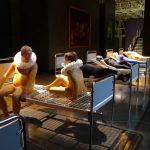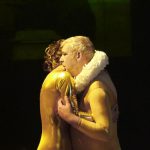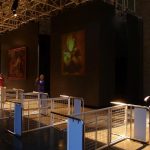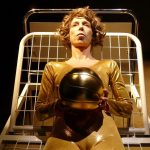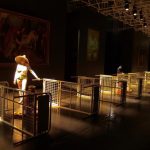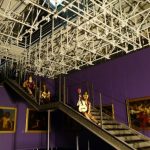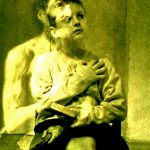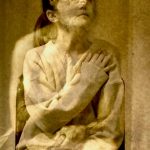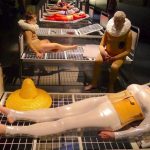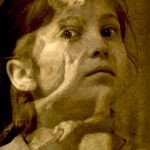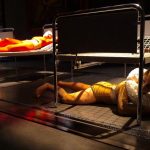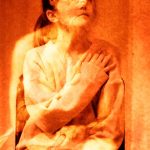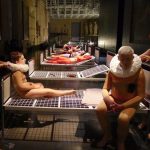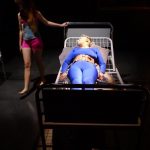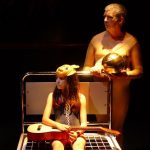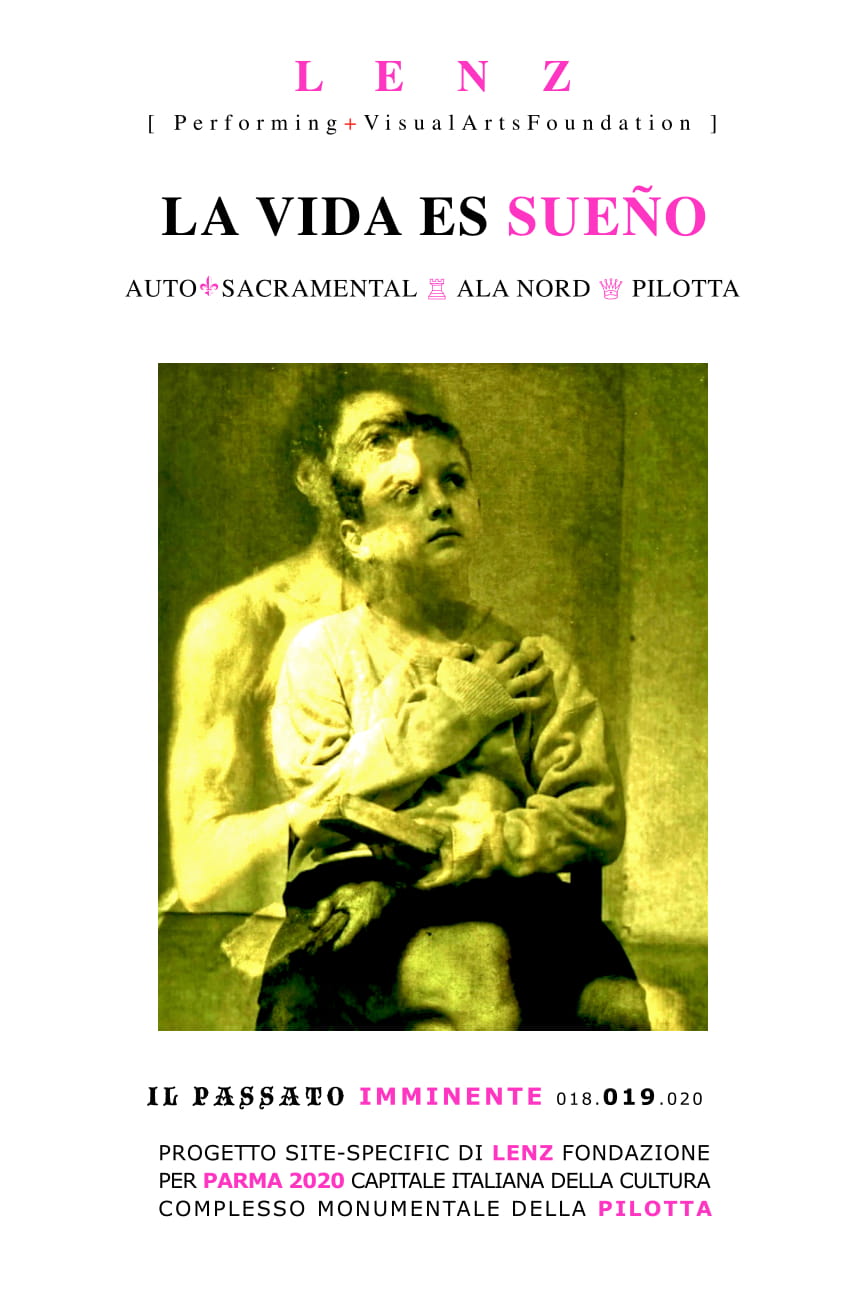
THE LIFE IS DREAM
Installation project created in the monumental spaces of the Pilotta Complex in Parma divided over three years:
2018 The Great Theater of the World
auto sacramental of Calderón de la Barca
2019 The life is dream
auto sacramental of Calderón de la Barca
2020>2021 Life is a dream
theological-philosophical drama by Calderón de la Barca
Project for Parma, Italian Capital of Culture 2020+21
In the sacramental car man, which has been defined as “a synthesis of the theological history of humanity” (Valbuena Prat), fallen by original sin, he is restored to his sovereign rank through the Redemption; the “dream of life” is here the dream of sin, and theology confirms, at a much higher level, the philosophy". The power, wisdom, the love, the shadow, the light, the Prince of Darkness, the man, the earth, the Air, fire, the water, the Understanding, Choice and Music: these are the PERSONAS of the sacramental car.
—
North Wing_National Gallery
Monumental Complex of Pilotta_Parma
The installation of The life is dream It consists of fourteen metal hospital beds, reclining, placed next to each other along the Gallery, in clear reflection with the sculptural groups and the large late seventeenth-century canvases depicting the Lamentations, Depositions and Annunciations and in close material dialogue with the imposing sky-truss in innocent tubes created by the architect Guido Canali in the Seventies, at the time of the renovation of the Pilotta in the name of a museum space understood as "a system that must necessarily expose its mechanisms".
Wedged between dream and awakening, the sanitary cot – stripped of mattresses and sheets – it evokes not only the suspended time of agony, the crack between life and death, but also the mental hospital restraint bed, residual place in which the only possible space of freedom is in dream life.
The imagoturgy in which the figure of Job is imprinted on the three empty exhibition walls that run along the thirty-five meters of the North Gallery, from the painting by Antonio de Pereda present in an adjacent room, overlaps with those of some auto sacramental performers. They are figures that, transfiguring one into the other, they can compose a new painting, between reality and dream, that includes entrances and exits between the two doors of life. A painting among paintings which, however, will be short-lived, only the provisional time of a representation.
Our Man, per l’auto sacramental, he will have the features of a teenager in the same posture as the painting: to hold the shard, the hand resting on the heart and the gaze turned upwards, to God. The difference between the fixity of the painting in the penitent figure of Job and the movement of the Man/Child, in the young body of those who look towards the future, will distinguish between the freedom granted whether or not to betray the Faith and the freedom to be conquered as life progresses. What is the boundary between the free will of one and the other?
THE LIFE IS DREAM
auto sacramental
Video installation + performance
Da Calderón de la Barca
Text and imagery | Francesco Pititto
Installation, costumes and direction | Maria Federica Masters
Musica | Claudius Rocchetti
Performer | Sandra Soncini, Franck Berzieri, Paolo Maccini (Ensemble Lenz Foundation); Matthew Castellazzi, Lorenzo Davini, Martina Gismondi, Agatha Pelosi, Margherita Picchi, Jade Vaccaro (Ars Canto Association) and Giuseppina Cattani, Mary Garden, Elena Nunziata, Mirella Pongolini, Cesare Quintavalla, Valeria Spocci
Site-specific project for the Pilotta Monumental Complex in Parma
Treatment | Elena Sorbi
Organization | Ilaria Stocchi
Production assistant | Loredana Scianna
Press and communication office | Michele Pascarella
Technical care | Alice Scartapacchio
Production | Lenz Foundation
trailer
whole wheat
Bodies harnessed in costumes that seem, not by chance, to be instruments of restraint – bodies of elderly singing actors, of rendered actors sensitive from having gone through mental disability, emphasized by the comparison with youth.
Gianni Manzella, the poster
Some sequences have poignant emotional strength. Like that of the Man and his double Child who touch each other and touch each other's faces, the hands, mirroring each other […] Finally a small tricycle advances, carried by a woman. The Child climbs onto it. Walking backwards through the long hall, return to the starting point, stopping in front of the pile of rags, ashen and shapeless mass from which he had emerged. [more]
Giuseppe Distefano, Artribute
The allegorical aspects are absorbed by the truth of the bodies: a moving and emotional show. Maestri and Pititto reread Calderón de la Barca's best-known text between painful monologues and aesthetic vortices.
Valeria Ottolenghi, Journal of Parma
I dig into the text as a reinvention of ancient words and memories, metabolized into dreamlike scenarios that speak to the soul crevasses of the present.
Massimo Marino, Corriere della Sera – Bologna
The spectator is free to move around the exhibition rooms left in dim light and to discover the characters of the drama initially crouched and motionless in their dark niches. Then the music: insinuating, fragmented, persuasive, dissonant and painful. [more]
Emanuela Zanon, Juliet – Contemporary Art Magazine
In The life is dream – auto sacramental (2019) – second chapter of the three-year site-specific project Il Passato Imminente – the exchange between seventeenth-century paintings and images of reality is a striking fact. [more]
Petra Chiodi, Exibart
Everything flows inexorably under the Caravaggio-esque lights that carve the figures giving them a strange and unnatural consistency. There remain those hospital beds that welcome old and young people united by a common infirmity linked to human action/suffering. [more]
Enrico Pastore, Rumor(s)cena
The installation, Therefore, is the strong point of this auto sacramental That, leads the protagonist through allegorical images, l’everyman and the spectator through ever deeper and more painful states of knowledge.
Simona M. Frigerio, Trajectories
Applause for the clear and flawless installation made up of hospital beds that take on different functions throughout the story.
Luciano Uggé, Persinsala
Thanks to the Lenz Foundation for dreaming of such a poetic show and a barrier-free way of working. Thank you for placing us once again before the abyss.
Ignacio Garcia, Director of the Almagro Festival (Spain)
The conduct of this work, his way of putting the spaces of the Pilotta into shape, to coordinate interpreters who are so different from each other and so concretely – so creaturely – present, It really seemed extremely interesting to me.
Salvatore Tedesco, University of Palermo
What interests Lenz Fondazione is to narrate the birth, the growth and dying of Man, asking the assembled spectators some fundamental questions, much bigger than them. [more]
Enrico Piergiacomi, Liminatheaters
The game with infinity, everything for everything by Francesco Pititto and Maria Federica Maestri, it is a stage that inhabits the gift of making gravity poetry. [more]
Matteo Brighenti, PAC – paneacquaculture
here it matters little that the so-called "sensitive actor" knows how to re-quote those verses, lose them or reinvent them, because at that moment he is opening up a glimpse of vision that has little to do with the show intended as a test and exhibition of talent. Here we really pretend. [more]
Giulio Sleep, Paper Street
TICKETS full € 18, reduced € 13, professional € 9
REDUCTIONS under 30, over 60, students, DOC card, YoungER Card, AUSL employees, Friends of Pilotta Association, employees of the Pilotta Monumental Complex, Associations, groups of 5 or more people.
By showing the entry ticket on the day of issue you will be entitled to a discount on a drink at the La Terrazza bar in Parma (Via dei Farnese 23)







